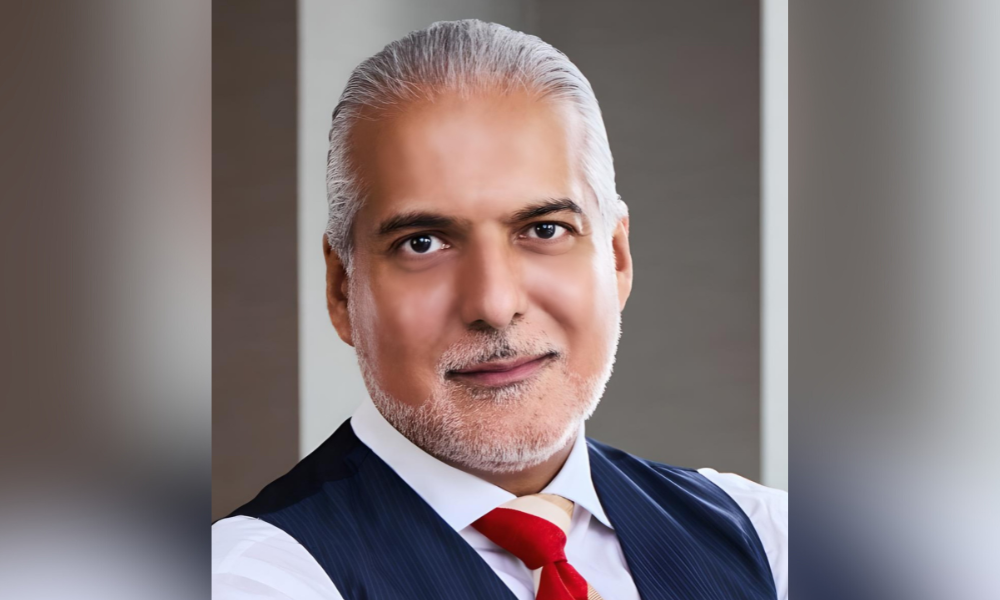Arif Bhalwani explains how pre-conceived notions, rising defaults, and tariff uncertainty are creating new stressors for the private credit landscape

While the private credit market has grown rapidly in recent years, Arif Bhalwani asserts misconceptions about the asset class remain deeply entrenched.
“One of the biggest ones is around the opacity of the sector and that it lacks transparency,” said Bhalwani, CEO of Third Eye Capital. He disagrees with critics who frame private credit as a complex asset, noting that investors receive detailed disclosures, right down to the level of the underlying investment and the collateral covenants.
Bhalwani also argues that the visibility investors get in private credit can exceed what’s available in the public bond market.
“It's a level of disclosure and a level of control that an investor never gets in the public market,” he explained. “You go and buy a bond of a company... they’re given a debenture, and then they get information and reporting that's completely lagged in arrears. You get it ninety days after it’s relevant.”
Another persistent misunderstanding lies in how investors value liquidity. In his view, the illiquidity is “a feature and not a bug,” allowing lenders to preserve value through direct engagement with borrowers during periods of stress.
“When someone's putting money in the private credit space, they’re knowingly making a trade-off... It’s structured to deliver a higher risk-adjusted return, because it avoids the actual volatility and the forced selling that could potentially plague a public market,” said Bhalwani.
Bhalwani acknowledged that while private credit isn’t a fit for every investor, he’s clear about why scepticism around the asset class is often misplaced, sometimes motivated by self-interest. Additionally, as flows shift away from public fixed income into private credit, traditional managers are under pressure.
“A lot of public market managers are worried because they're seeing flows move away from their strategy,” he explained. “Part of it, of course, is protecting your book and protecting your franchise by losing assets to a private credit manager.”
He doesn’t take issue with healthy scrutiny. In fact, he welcomes it.
“The scepticism is always healthy. It keeps everybody sharp and honest,” Bhalwani added.
Where Bhalwani doesn’t equivocate is on the structural strength of private credit. He believes private credit has “always had structural protections that are much stronger than in high yield or public market debt.”
He emphasized most private credit in Canada is secured, noting his own firm’s loans are 85 to 95 per cent senior secured, while also crediting Canadian banks for establishing the legal infrastructure that private lenders now operate within, adding that courts in Canada “are much more predictable than in the US when it comes to creditor rights and the protection of our rights in a in a downside situation.”
Still, not all private credit managers are built the same, particularly when it comes to managing distress in a high-rate environment.
“Defaults are definitely going to increase, and that’s going to require a skill set that not a lot of lenders have,” he said, underscoring there hasn’t been a lot of cycles where private debt managers “have had to take over their businesses and own them.”
He added that COVID-era interventions created a temporary reprieve because of the amount of indulgence granted and “lenders were able to kick the can down the road,” as a result.
Bhalwani also acknowledged covenant erosion as another risk that has crept into parts of the market during more benign times because “the worst deals happen in the best times and people get complacent,” he said.
Consequently, managers are pushed to deploy dry powder and sometimes compromise on terms.
“There can be that temptation that drives you to do deals that you might not otherwise do,” he added.
But today’s climate is shifting in favour of disciplined lenders, Bhalwani explained, because asset managers are quickly finding out that if they can put out capital today, they’re pretty much doing so without competition.
“We're getting into deals where we're able to negotiate our terms almost with no resistance” he noted. However, he warned that many managers may be stuck holding loans they can’t easily exit.
Meanwhile, tariff uncertainty has also added another layer of difficulty. He pointed to a buyer who recently walked away from a deal involving one of their portfolio companies due to US policy risk.
“Every day there’s something new, and there’s something that you now have to factor back into your analysis.”
For institutional allocators weighing private credit today, Bhalwani recommends a focus on compensation for illiquidity risks. He asserted institutional investors need to ensure they’re being adequately compensated for the lack of short-term liquidity in private credit investments.
Moreover, trust in the manager's ability to protect capital is also crucial, he said. Thorough due diligence on the manager's track record, investment process, and risk management is critical because investors can’t easily exit the investment.
Given the lack of liquidity in private credit, he believes selecting the right private credit manager with a proven track record is essential.
Bhalwani ultimately sees the current market environment as too unpredictable for large investment moves, especially in sectors exposed to geopolitical volatility and asserted that it’s prudent for institutional investors to take a “wait and see” approach.
Notably, the uncertainty around trade policy and tariffs is making it difficult to accurately assess risk.
“If there’s one thing that lenders hate, it’s surprises,” he said.



